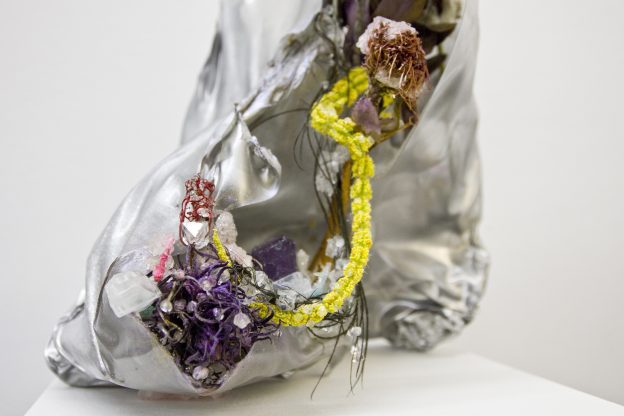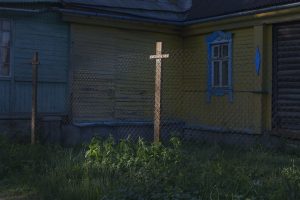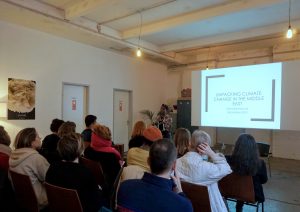with SCI-COPIA
an artwork by SADIE WEIS
In December 2011, I visited Cairo during the excitement of mass mobilization—of the disenfranchised, the young, and the poor—to topple a dictator, to imagine new possibilities, and to participate in forming a more democratic society. I visited the fortress city at the tail-end of the Arab uprisings, where vestiges of encampments could be found in Tahrir Square, popularly known as Liberation Square. Politics was a quotidian act, where people exercised their hopes doing what Asef Bayat has called “generating new spaces within which they can voice their dissent and assert their presence in pursuit of bettering their lives.” There was a palpable sense of systematic change, yet buried underneath this political metamorphosis was my own bodily alteration. I could not breathe. During my trip, I developed mild respiratory issues, my skin broke out, and my mucus was black. The most likely explanation was exposure to perennial air pollution in Cairo, a visible cloud that settles over the city, smothering the Nile Delta, and beyond. This ecological phenomenon plagues the city, darkening the sky into a foreboding smog which is gathered from desert grains and industrial pollution, carbon-based vehicles, and manufacturing plants. My bodily reactions are unsettling, and point to climate change, which impacts whether or not people can respire in the city.
The air pollution in Cairo is indicative of how climate change is rooted in extractive resources such as petrol, gas, and coal and are then envisaged in a postcolonial landscape, generating airborne and respiratory diseases on a global scale. In his monograph Breathing Space, Greg Mitman depicts “breathing spaces,” which are linked to both nature and human constructions. He writes:
[T]he places where Americans have struggled to breathe, as well as the spaces they have created to breathe more freely—lavishly landscaped estates, hay fever resorts, air-conditioned homes—have been shaped, not only by the ecology of animal, insect, plant, and man-made allergens, but also by the unequal distribution of wealth and health care in American society.
Although the place and inequality he discusses is focused on the United States, the consequences of who is allowed to breathe extends globally. According to a 2018 report by the World Health Organization, 90% of the world’s population breathes polluted air, yet the ecological damage varies. For people in mega cities like Cairo, air pollution can persist for days or weeks at a time. Such volatile ecological phenomena sends people to the hospital with exacerbated lung infections and asthma attacks at unusually high rates, and contributes to cancer and other long-term illnesses.
In her essay “On Being Ill,” Virginia Woolf lamented over literary representations of poor health. In this piece, she argues that authors rarely write about illness in their work and suggests that accounts on malaise could enliven the reader. For Woolf, a malady offered a significant amount of inspiration and leverage for a colorful story. The body and its ailments are part of a broader struggle that exists between the soul and the corpus. For the sick, the world is turned on its head. The leaves outside may appear purple and family members might appear taller than normal. Physical pain might distract one from concentrating well. Altogether, illness changes one’s mood and perceptions.
By this account, illness cannot be reduced to the physical. I agree with Woolf. The environment plays into bodily illness and how marginalized groups, such as the (formerly) colonized, speak about and embody illness. These personal and literary formulations can go a step further—they can point us to why people get sick in the first place and how illness is rooted in the social and economic processes that initiate ill health. Disease is not an abstract phenomenon that exists internal to the body, rather, it is co-produced by the environment we move through, the air we breath, and the toxicities we ingest. Climate change is part of our medical narrative.
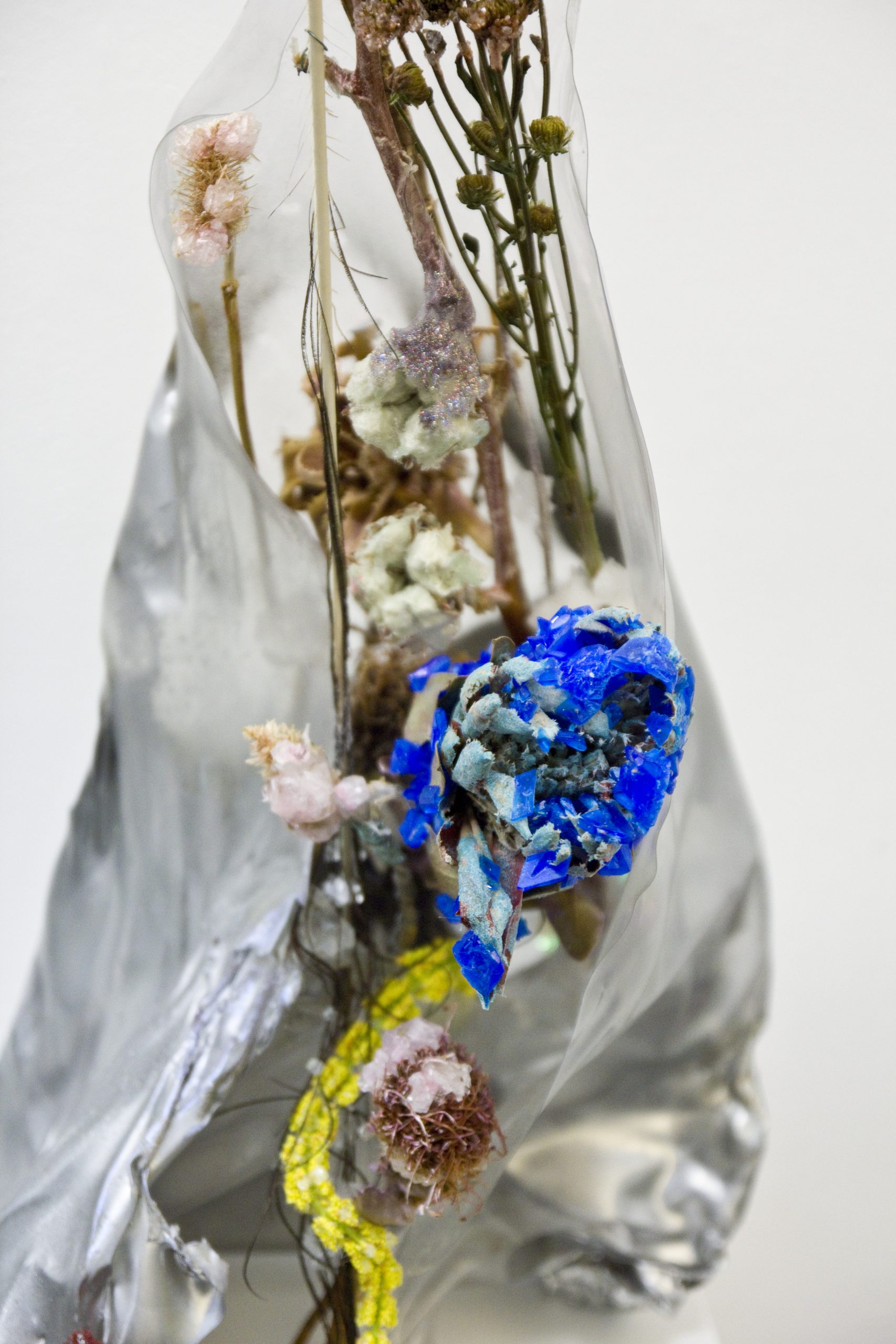
My encounter with the air pollution in Cairo is one of many examples of how a moment and a new environment is linked to the global gravity of climate change. Climate change gestures to the transformation of bodies and the creation of new illnesses. The sensation of breathing toxic air and the permutations in the particles one inhales is one of the many examples of how toxicities are made omnipresent. Our bodies operate as vestibules subjected to the new social geography that global capitalism is reifying, generating hierarchies of life and death. Since the beginning of the nineteenth century, modernization projects in Cairo, as documented by Khaled Fahmy in All the Pasha’s Men, produced massive state projects including expanding irrigation systems, reforming educational institutions, and expanding agricultural production. While Egyptian nationalist efforts played a role in changing the built environment, British imperial interventions, especially alongside development along the Nile River, as Jennifer Derr writes, also generated new diseases. Even further, Red Sea, Mediterranean Sea, and Suez Canal transportation is another mode of how development projects in Egypt have increased its carbon footprint. Climate catastrophes are not independent phenomena that exist in local settings, rather they are part of five hundred years of colonialism as Imeh Ituen and Rebecca Abena Kennedy-Asante have remarked.
The history of environmental and climate change in Cairo and the Middle East is a key example of increased temperature, increased desertification, and increased air pollution. In their 2018 article on climate change in the Middle East and North Africa, Edoardo Bucchignani and his colleagues projected temperature increases of 0.44 and 0.22 degrees and a reduction of precipitation. The data is not accidental, rather it is a growing environmental crisis that has been deployed for centuries. In Something New Under the Sun, J.R. McNeill indicated that “the world in the 20th century used 10 times as much energy as in the thousand years before.” What he is gesturing towards is the nearly sixteenfold energy use and increases in industrial output. A profound shift has happened between humans and nature, and humans have been part of that climatic shift. The Anthropocene, as popularized by Nobel Prize winner Paul Crutzen, has circulated as one of the many ways that people mark, classify, and interpret how climate change occurs today.
The notion of the Anthropocene can be a useful tool, and more recently, the notions of the plantationocene and the capitalocene, offer insight about the legacies of capitalism on the earth. Researchers identify the plantationocene with former and present plantations that organize agricultural, human, and financial relations. As an environmental humanities practice, researchers such as Janae Davis, attempt to elucidate how the multispecies interactions on the plantation, can be a productive site for understanding the damage done on Earth while also pointing to agricultural reinvention by the enslaved. Capitalism, and subsequently the capitalocene, Jason Moore argues, locates the climate crisis in petrochemical dependency, a phenomenon that marks the twentieth century. Part of what makes the Middle East and North Africa exceptional is how various countries therein enter a world system of petrol-based capitalism, whether those countries are directly involved or not. Robert Vitalis’s article “Oil: The Stuff of Mass Delusions” outlines the dynamic cores of petrol extraction increasingly concentrated in the Middle East, which are, he argues, geopolitical. He also links geopolitical alliances between Saudi Arabia and the United States to petrol dependency. The apotheosis of these phenomena are predicated on new social relations, economic relations, and political demands, disaggregated and laid out in ways that lead to the degradation of the biosphere.
These contemporary geopolitical formations and their ecological and social impacts result from centuries-long, aggressive extractive campaigns—which began under colonialism and which continue by the authoritarian and profit-driven elites of the twenty-first century. The historical legacies can be found today in a rise in global industrial consumption, which has resulted in an increase in CO2 emissions and a rise of carbon in the atmosphere. Both colonialism and its unwitting offspring neoliberalism—both based on models of maximum yield, productivity, and exploitation—have contributed dramatically to environmental degradation and shifts in the Middle East and North Africa where petrol have long been extracted from the shores of the Arabian and Persian Gulf, and where waste amounts to 150 million tons per year.
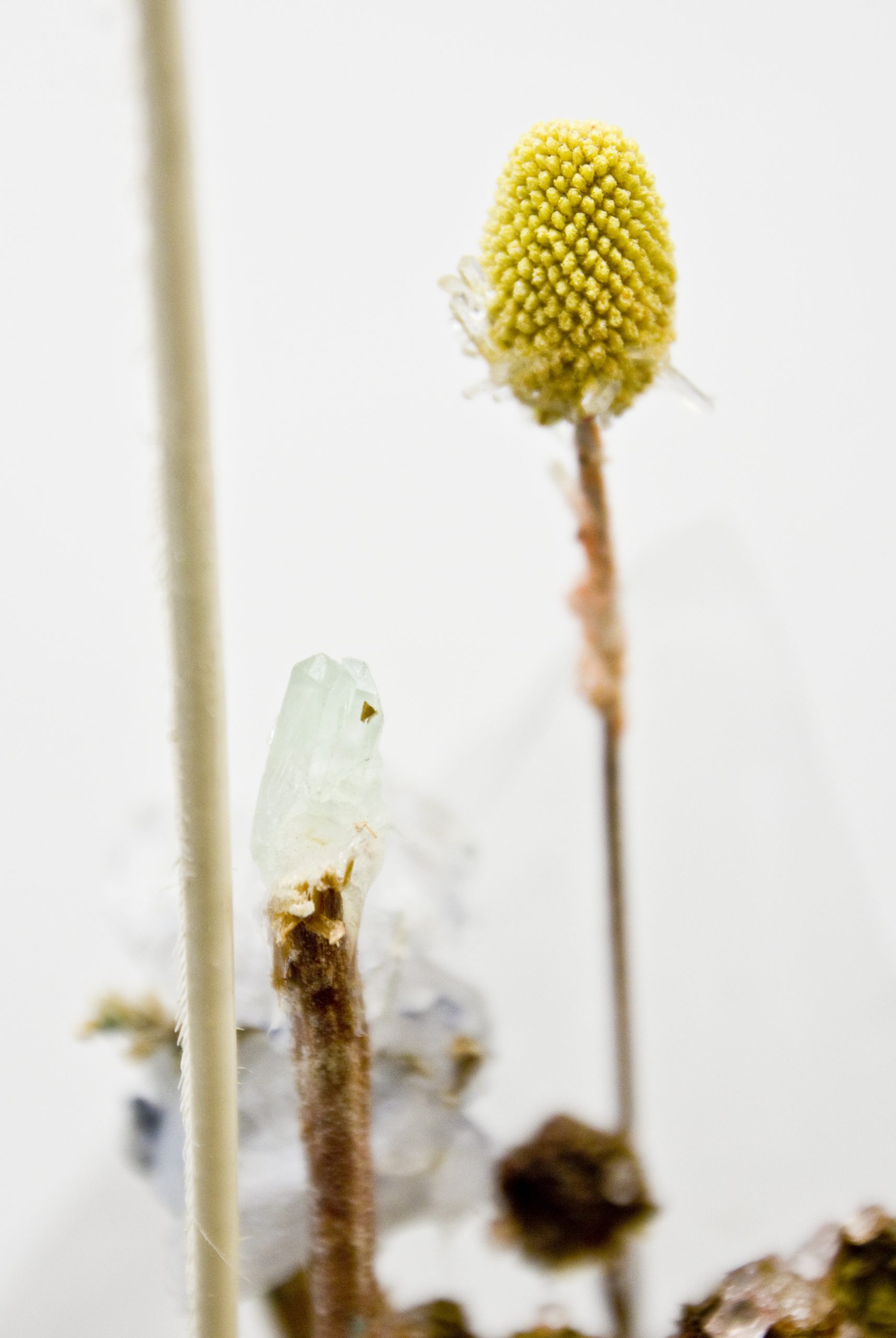
In 2014, the European Union (EU) and Egypt signed a bilateral agreement to address Egypt’s natural gas production and developed a partnership with the Kafr El Sheikh Waste Water Management Programme. Moreover, there were subsequent agreements in 2014 up until 2017 by the EU to allocate funds for sustainable economic development as well as Egyptian pollution abatement—most of which are tied to urban development projects such as the Fayoum Wastewater Expansion Programme. While efforts such as these are lauded, the decisions are not being made by the majority of Egyptian citizens, and their results are not always made visible to everyday people. In contrast, non-elite Egyptians, such as the zabaleen, have long been working to deal with waste consumption in the city of Cairo. As Yasmine Hassan reported in Egypt Today, “The Moqattam Garbage City alone handles 5,000 tons of garbage per day, 90 percent of which is recycled in workshops within the city itself and reintegrated into the economy through factories and enterprises.” This grassroots, rather than legislative, process of managing Egypt’s internal waste has long been tied to the modern experience of many citizens in Cairo.
One thing that is needed in the global climate justice movement today is true reflection on how unevenly resource extraction has been distributed and exercised, and the extent to which extracted petrol in particular has contributed to the environmental crisis of today. The circumstances that create the modern climate crisis cannot be extricated from their financial or imperialist roots, from the full list of reasons petrol is extracted from within one community and not another. As former Malaysian Prime Minister Mohamad Mahathir remarked in the 1992 Rio de Janeiro Conference:
When the rich chopped down their own forests, built their poison-belching factories and scoured the world for cheap resources, the poor said nothing. Indeed they paid for the development of the rich. Now the rich claim a right to regulate the development of the poor countries.
What Mahathir is pointing to is imperialism’s material and political imprint—one tied to resource extraction coupled with continued capitalist expansion—which has led to the further inequality between former colonial powers and the formerly colonized. However, in the years to come, no one will be immune from the consequences of global industrial waste, deforestation, and the exposure to pathogens.
We are told, by the youth who have galvanized for the climate through such actions as Fridays for the Future, that the world is burning. The burning of the planet, as Naomi Klein points out in On Fire, is not merely inundated by a metaphorical fire, but it is one that is disproportionately realized in the Global South. In Cairo, that plays out as a dark cloud that makes it difficult to breathe. The capricious presence of “bad air” in Cairo is but one iteration of a host of environmental issues. Yet, what is generating the bad air is what lies beneath the surface of people’s daily lives. The environment is assembled through particulate matter, molecules that are unseen, and clouds that descend upon us, predicated on unpredictable elements, expansive real estate into the desert, and a sewage system that needs fixing.
In June 2018 I returned to Cairo and walked through Cairo’s Khan al Khalili where I heard the familiar sounds of prayer calls and people surviving in the shadow of the Arab uprisings. I saw a moribund revolution with glimmers of hope, while all around, air pollution had gone unhinged with unsanctioned regulation of emissions in the city of Cairo. The climate crisis alters one’s constitution, and it can contribute to unintended consequences that make people sick. Today, ecological shifts of the mega cities like Cairo are one example of the climate dystopia that is to come. The inability to respire is one ecological and bodily extension of the suffocation that results from long histories of authoritarian rule, economic destruction, and inequity. Similar to 2011, breathing was difficult, albeit for a host of reasons. In my return to Cairo, what stood out to me was that breathlessness is no longer merely a metaphor, it has become a way of life.
Bayat, Asef. Life as Politics: How Ordinary People Change the Middle. Stanford University Press, 2013.
Bucchignani, Edoardo, et al. “Climate change projections for the Middle East–North Africa domain with COSMO-CLM at different spatial resolutions.” Advances in Climate Change Research,vol. 9, no. 1, 2018, pp. 66-80.
Davis, Janae, et al. “Anthropocene, Capitalocene, . . . Plantationocene?: A Manifesto for Ecological Justice in an Age of Global Crises.” Geography Compass, vol. 13, no. 5, 2019.
Derr, Jennifer. The Lived Nile: Environment, Disease, and Material Colonial Economy in Egypt. Stanford University Press, 2019.
European Commission. “Commission Implementing Decision: on the Annual Action Programme 2014 in favour of Egypt to be financed from the general budget of the European Union.” The European Commission, 23 Oct. 2014, https://ec.europa.eu/neighbourhoodenlargement/sites/near/files/neighbourhood/pdf/key-documents/aap-2014-egypt-financing-commission-decision-20141023_en.pdf.
European Commission. “Commission Implementing Decision: on the Annual Action Programme 2017 (Part 2) in favour of Egypt to be financed from the general budget of the Union.” The European Commission, 6 Dec. 2017, https://ec.europa.eu/neighbourhood-enlargement/sites/near/files/annual-action-programme-2017-decision-and-annexes_egypt.pdf.
Fahmy, Khaled. All the Pasha’s Men: Mehmed Ali, His Army, and the Making of Modern Egypt. Cambridge University Press, 1997.
Hassan, Yasmine. “From trash to treasure: Egypt’s new recycling initiative triggers dispute with millions of garbage collectors.” Egypt Today, 17 Apr. 2017, https://www.egypttoday.com/Article/1/4027/From-trash-to-treasure-Egypt%E2%80%99s-new-recycling-initiative-triggers-dispute.
Hessler, Peter. “Tales of the Trash.” The New Yorker, 6 Oct. 2014, https://www.newyorker.com/magazine/2014/10/13/tales-trash.
Ituen, Imeh, and Rebecca Abena Kennedy-Asante. “500 Jahre Umweltrassismus.” Die Tageszeitung, 18 Nov. 2019, https://taz.de/Kolonialismus-und-Klimakrise/!5638661.
Klein, Naomi. On Fire: The Burning Case of the Green New Deal. Penguin, 2019.
Mitman, Gregg. Breathing Space: How Allergies Shape Our Lives and Landscapes. Yale University Press, 2007.
Mohamad, Mahathir. “Statement by His Excellency Prime Minister Dr Mahathir Mohamad of Malaysia at the United Nations Conference on Environment and Development Rio de Janeiro, 13 June 1992.” ASEAN Economic Bulletin, vol. 9, no. 1, 1992, pp. 106-108.
Moore, Jason W. “The Capitalocene, Part I: On the nature and origins of our ecological crisis.” The Journal of Peasant Studies, vol. 44, no. 3, 2017, pp. 594–630.
World Health Organization. “9 out of 10 people worldwide breathe polluted air, but more countries are taking action.” WHO Press Release, 2 May 2018, https://www.who.int/news-room/detail/02-05-2018-9-out-of-10-people-worldwide-breathe-polluted-air-but-more-countries-are-taking-action.
Zafar, Salman. “Waste-to-Energy Outlook for the Middle East.” EcoMENA, 12 Nov. 2016, https://www.ecomena.org/waste-to-energy-perspectives-for-middle-east.
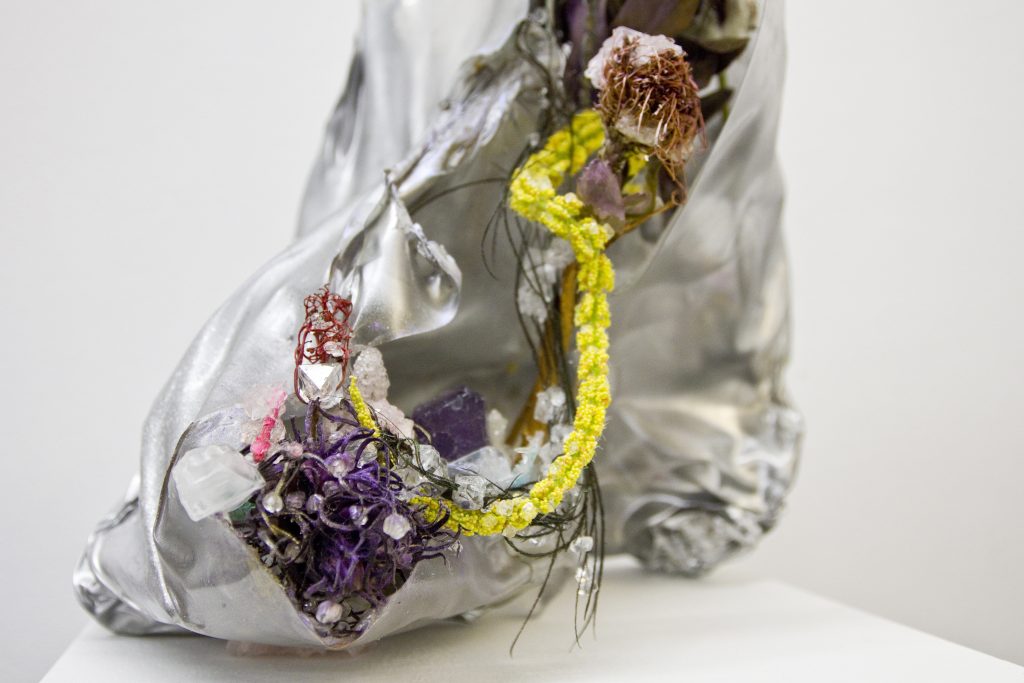
SCI-COPIA
Sci-Copia is a cornucopia ménage of crystallized plants and flowers. Cornucopias are most often associated with the goddess of the harvest and fertility, Demeter. Although she is the goddess who introduced agriculture to mankind, Demeter is also the goddess responsible for creating winter. Sci-Copia offers a crystallized, uncanny version of this celebration of fleeting abundance, a moment in time, as the plants, though alive at the beginning of the crystallization process, slowly wither as the solidification takes over and they become definite. They do not shrivel and wilt entirely however, yet remain beautifully stagnant in a permanent state of grace, as the last breath of life before they would have otherwise perished remains forever preserved.
DR. EDNA BONHOMME writer
Edna Bonhomme is a historian and Postdoctoral Fellow at the Max Planck Institute for History of Science. She earned her PhD in the history of science at Princeton University in 2017. Her dissertation, Plagued Bodies and Spaces: Medicine, Trade, and Death in Egypt and Tunisia, 1500-1804 CE, explored the history of epidemics, trade, and funeral rites in North Africa and the Middle East. She co-created Decolonization in Action, a podcast series that explores the ways that decoloniality is understood and put into practice by artists, researchers, and activists.
SADIE WEIS artist
Sadie Weis is a trans-disciplinary artist and creator of work that combine alternating perceptions of reality and wonder with scientific elements. These creations simulate future-world-making and channels to fantastical sensations, through powerful constellations of inquiry and the imagination.
Sadie was born in Salina, Kansas, USA, and studied Painting and Fine Arts at the University of Kansas. She has had solo exhibitions in New York City and Berlin as well as a roster of international exhibitions. Sadie recently completed a research residency and grant program with scientists at Paul Drude Institut für Feskörperelektronik in Berlin exploring the relationships between art and the physical sciences.
SCI-COPIA (2017): Various crystalized plants and flowers of Potassium Dichromat, Copper Sulphate, Potassium Aluminium Sulphate, Ammonium Di-hydrogen Phosphate, melted plastic, holographic glitter, silicon.
© Copyright for all texts published in Stillpoint Magazine are held by the authors thereof, and for all visual artworks by the visual artists thereof, effective from the year of publication. Stillpoint Magazine holds copyright to all additional images, branding, design and supplementary texts across stillpointmag.org as well as in additional social media profiles, digital platforms and print materials. All rights reserved.
